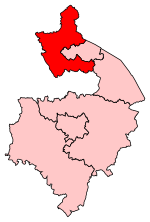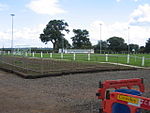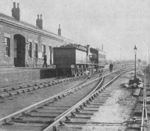Maxstoke railway station
Coleshill, WarwickshireDisused railway stations in WarwickshireFormer Midland Railway stationsPages with no open date in Infobox stationRailway stations in Great Britain closed in 1917 ... and 4 more
Railway stations in Great Britain opened in 1839Use British English from November 2016Warwickshire building and structure stubsWest Midlands (region) railway station stubs

Maxstoke railway station was a railway station opened in 1839 as Coleshill by the Birmingham and Derby Junction Railway on its original route from Derby to Hampton-in-Arden meeting the London and Birmingham Railway for London. The station served the village of Maxstoke and town of Coleshill in Warwickshire, England.
Excerpt from the Wikipedia article Maxstoke railway station (License: CC BY-SA 3.0, Authors, Images).Maxstoke railway station
Maxstoke Lane, North Warwickshire
Geographical coordinates (GPS) Address External links Nearby Places Show on map
Geographical coordinates (GPS)
| Latitude | Longitude |
|---|---|
| N 52.494 ° | E -1.6884 ° |
Address
Maxstoke
Maxstoke Lane
B46 3AY North Warwickshire
England, United Kingdom
Open on Google Maps







